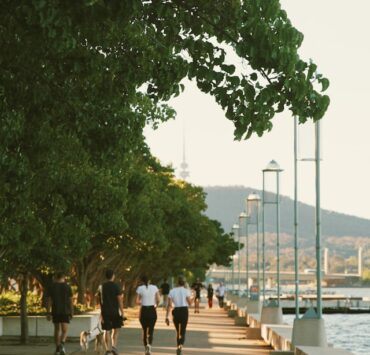Unwind & De-stress: 100% Effective Yoga Poses for Mind Relaxation
You must have heard that yoga provides relief to anxiety and stress. It’s a relaxant for your mind. You have to make time for yoga for mind relaxation, no matter how packed your schedule is. It’s not hard, it will boost your energy and keep your mind refreshed.
This has been confirmed by scientific research. Unlike regular workouts, yoga incorporates meditation and working on your breaths to instantly make yourself relaxed.
Stress is not uncommon in this era. Whether it is education-related stress, marital stress, or an undefined anxiety you continuously feel, yoga can be your best medicine. You don’t have to spend hours doing yoga, it’s a matter of a few minutes. Here’s what I will be covering in this blog;
- How does yoga relieve anxiety and stress?
- 7 Effective postures of yoga for mind relaxation
- Legs up the wall
- Easy posture
- Fish posture
- Child’s posture
- Hero posture
- Tree posture
- Forward bend
- Which yoga posture is best to stop overthinking?
- Conclusion
How Yoga Relieves Anxiety and Stress?
Yoga poses promote brain health by achieving a balance between the sympathetic and parasympathetic nervous systems. Your blood pressure and heart rate decrease by engaging in meditation.
Cortisol, a hormone, is elevated during stressful conditions. It may cause anxiety, depression, and heart disease. It works to reduce cortisol levels in the blood and hence is effective in managing stress.
While doing pranayama, a part of yoga, your attention is focused on your breaths, rather than your daily chaotic life. It gives your mind peace and clarity. The physical poses included in yoga alleviate symptoms of anxiety. It reduces stiffness in shoulders, and pain in your back. When your mind is relaxed, it will keep negative thoughts away from you.
7 Effective Postures of Yoga for Mind Relaxation
Yoga has its applications in diverse aspects. You can choose it to improve brain health, reduce the risk of cardiovascular disease, alleviate anxiety, or enhance flexibility in your body. The best part?
It doesn’t take time to show results! You can notice significant changes in your mental health in a week. Start yoga now, no matter what your age group is. Here I have highlighted a few yoga postures for mind relaxation.
- Legs up the Wall Posture
Let’s begin with the easiest pose you try at home without any trouble. It has been my favorite ever since I started engaging in meditation. All your back muscles will be stretched which are mainly affected by stress and anxiety. It breaks down the tension in the muscles and enhances blood flow in the body.
The picture would give you a clear idea. You just need to lay on your back with the legs raised vertically upwards against a wall. Legs should be perpendicular to the back.
- Easy Posture
You might have heard of this pose as it’s the basic posture. Sit down on the mat with your legs folded. Stretch the arms towards your knees. The back should be straight up, and the head facing the front. Focusing on the central nervous system halts the stress or sympathetic system.
Pro tip: You can use a support like a cushion to help you in this!

- Fish Posture
Start by lying down on your back. Elevate the upper body as much as possible, but the head should remain touching the ground. Make sure your legs are straight and you are not thinking about anything else. Breathe in four times, and breathe out 6 times for the best results. It gives ultimate stress relief by allowing your chest to breathe freely. It works directly on the heart to improve blood circulation.

- Child’s Posture
It’s best to minimize fatigue and relieve body aches. All the back muscles are stretched, to break down the tension. This posture resembles a child’s practice when they are crying. Sit on the mat with your legs folded. Stretch your arms and incline the upper body to the floor. The head should be touching the ground, with the arms extended.
- Hero Pose
Working on the knee, ankle, and spine, makes you identify the center point of your body. It starts with kneading down as in the easy posture. The upper surface of your feet should lay flat on the ground. Now, extend your arms at a distance and place them flat on the ground. Your back should be parallel to the floor surface, and the lower legs lying on the floor.
- Tree Pose
It is an amazing standing posture that works best for the abdominal and quadriceps. Stand on your right foot, with the left leg bending to place the left foot on the right leg as shown in the picture. You don’t need to press your foot to the right leg. I suggest you make a prayer position with your hands, or you can leave your hands on the sides. Stay in this posture for about 120 seconds, to benefit from it. Make sure to repeat it on the opposite side.

- Forward Bend
This is another standing posture that may seem harder at first, but it’s worth the results. It works on the full-body muscles and causes them to relax. Keep your feet 4-6 inches apart while you stand with your hands on your hips. Exhale deeply, and then bend down on your hips so that the fingers touch the ground. Your chin should make contact with your chest. Try to hold on for 60 seconds or even longer if you can.
Which Yoga Posture is Best to Stop Overthinking?
Overthinking is a habit of around 73% of people aged 25- 35 years. This is a huge number. You would have heard people telling you not to overthink, but no one tells you how to do this. I have got you covered. Yoga is effective in controlling overthinking.
You should try any of the yoga poses for stress and anxiety relief mentioned above. Make sure you focus on your posture, and your breaths rather than thinking about anything else. You can count your breaths to keep your attention diverted.
Final Thoughts!
You should not make excuses for not trying yoga. It can be your best friend and your medicine in treating overthinking, anxiety, and stress. Start with trying yoga for brain health for 5 minutes a day, you can increase it gradually. You will be astonished by the results that are evident in a week.
Make time for it, no matter where you are. You just require a mat, and you can try it in your office or your house. Another option is to try meditation postures for 60 seconds, several times a day.
Also, read this article.




